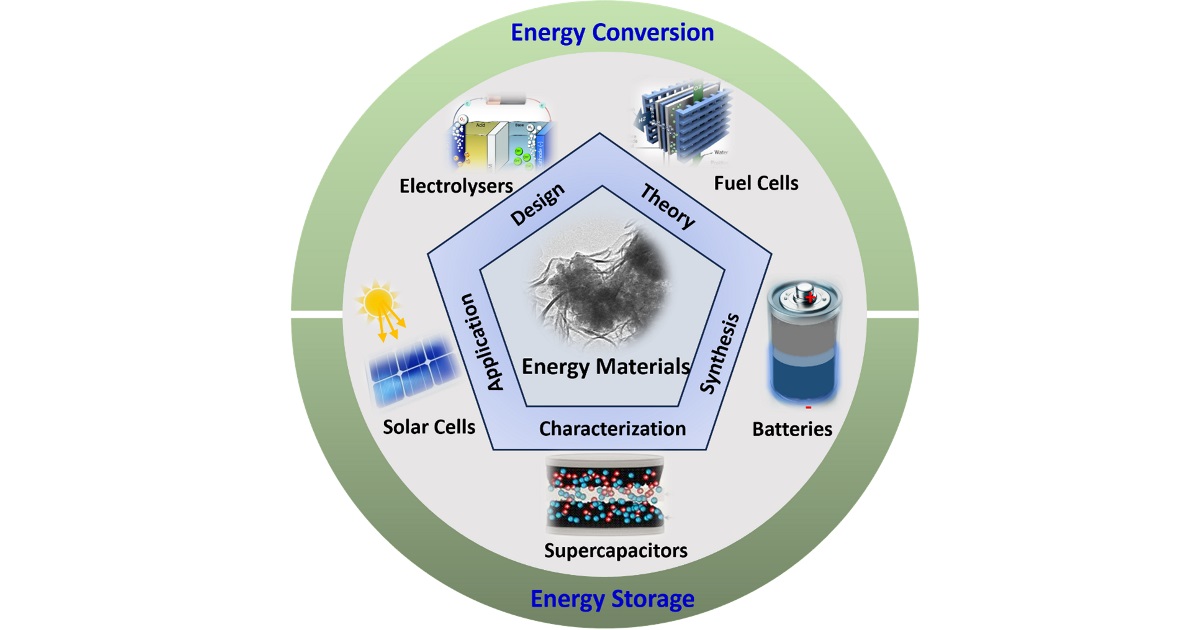Nanomaterials and Their Applications in Energy Storage and Conversion
A special issue of Energies (ISSN 1996-1073). This special issue belongs to the section "D1: Advanced Energy Materials".
Deadline for manuscript submissions: closed (31 October 2025) | Viewed by 3003

Special Issue Editors
Interests: electrocatalysis; functional materials; energy materials; electrochemical energy storage and conversion technologies; water splitting; fuel cells; batteries; carbon dioxide conversion
Special Issue Information
Dear Colleagues,
Energy storage and conversion technologies are crucial for meeting the ever-increasing demand for energy and the growing need for sustainable energy solutions. However, energy storage and conversion devices must be further improved to become viable and affordable options for widespread use. The biggest challenge for scientists and industry is increasing the efficiency and durability of these devices while also reducing the cost. It is arguable that materials are the primary pillar of the energy economy; however, excessive materials sourcing, high energy consumption for processing, and end-of-life disposal should also be considered in a sustainable energy economy. Therefore, the development of sustainable materials for energy storage and conversion technologies is key to transitioning to a clean and sustainable economy. This is because energy materials play a crucial role in improving the efficiency and durability of these devices, as fundamental chemical reactions occur in these advanced nanomaterials.
Developing energy materials with high activity and durability is essential for energy storage and conversion technologies, including electrocatalytic water splitting, fuel cells, supercapacitors, carbon dioxide reduction, lithium–ion batteries, and new batteries beyond lithium–ion batteries. In addition, as the usage of energy storage and conversion devices increases rapidly, it is equally important to discover methods for recovering active materials and precious metals for reuse or environmentally friendly disposal.
This Special Issue presents and collects research papers and review articles that explore the theory, design, synthesis, and characterization of materials for applications in energy conversion and storage systems, including electrocatalysis, supercapacitors, perovskite materials, metal–ion batteries (e.g., lithium–ion batteries), and emerging metal–air (M–air) batteries (e.g., magnesium–air, aluminum–air, sodium–air, potassium–air, iron–air, and zinc–air batteries).
Topics of interest for publication include, but are not limited to, the following:
- Research investigating the performance and durability of advanced nanomaterials in energy storage and conversion technologies.
- Nanomaterials for the hydrogen evolution reaction, oxygen evolution reaction, and oxygen reduction reaction.
- Materials in perovskite solar cells.
- Novel applications of nanomaterials in emerging/non-conventional energy storage and conversion systems.
- Sustainability of materials in energy storage and conversion technologies.
- Materials for metal–ion batteries, metal–air batteries, and supercapacitors.
- Theoretical and modeling approaches for nanomaterials in electrochemical energy systems.
- Material recovery from disposed electrochemical energy storage and conversion devices such as Li–ion Batteries, fuel cells, and supercapacitors.
Dr. Jean Marie Vianney Nsanzimana
Dr. Theophile Niyitanga
Guest Editors
Manuscript Submission Information
Manuscripts should be submitted online at www.mdpi.com by registering and logging in to this website. Once you are registered, click here to go to the submission form. Manuscripts can be submitted until the deadline. All submissions that pass pre-check are peer-reviewed. Accepted papers will be published continuously in the journal (as soon as accepted) and will be listed together on the special issue website. Research articles, review articles as well as short communications are invited. For planned papers, a title and short abstract (about 250 words) can be sent to the Editorial Office for assessment.
Submitted manuscripts should not have been published previously, nor be under consideration for publication elsewhere (except conference proceedings papers). All manuscripts are thoroughly refereed through a single-blind peer-review process. A guide for authors and other relevant information for submission of manuscripts is available on the Instructions for Authors page. Energies is an international peer-reviewed open access semimonthly journal published by MDPI.
Please visit the Instructions for Authors page before submitting a manuscript. The Article Processing Charge (APC) for publication in this open access journal is 2600 CHF (Swiss Francs). Submitted papers should be well formatted and use good English. Authors may use MDPI's English editing service prior to publication or during author revisions.
Keywords
- energy materials
- electrocatalysis
- energy storage and conversion
- batteries
- fuel cells
- water electrolysis
- hydrogen production
- supercapacitors
Benefits of Publishing in a Special Issue
- Ease of navigation: Grouping papers by topic helps scholars navigate broad scope journals more efficiently.
- Greater discoverability: Special Issues support the reach and impact of scientific research. Articles in Special Issues are more discoverable and cited more frequently.
- Expansion of research network: Special Issues facilitate connections among authors, fostering scientific collaborations.
- External promotion: Articles in Special Issues are often promoted through the journal's social media, increasing their visibility.
- Reprint: MDPI Books provides the opportunity to republish successful Special Issues in book format, both online and in print.
Further information on MDPI's Special Issue policies can be found here.






